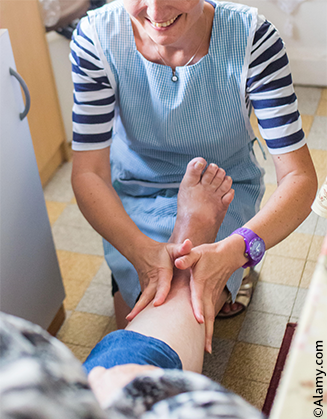Patients presenting with symptomatic PAD are at high risk of ischaemic stroke, myocardial infarction and progression of the PAD.2 Recent data suggest that half of chronic total occlusions occurring below the knee are thomboembolic in origin, and not due to in situ atherosclerosis as believed previously.3 Accordingly, treating PAD patients with antithrombotic agents may have benefits in reducing major adverse cardiovascular events (MACE).8

The COMPASS (Cardiovascular Outcomes for People Using Anticoagulation Strategies) trial demonstrated that adding rivaroxaban 2.5 mg twice daily to aspirin 100 mg once daily in patients with PAD reduced MACE compared to aspirin alone.4 The results of COMPASS were reviewed by the National Institute for Health and Care Excellence (NICE) in a technology appraisal guidance published on 17th October 2019 entitled ‘Rivaroxaban for preventing atherothrombotic events in people with coronary or peripheral artery disease’.5 Rivaroxaban plus aspirin was recommended within its marketing authorisation, as an option for preventing atherothrombotic events in adults with coronary artery disease or symptomatic PAD who are at high risk of ischaemic events mirroring the entry criteria for the COMPASS study.
Conflicts of interest
DC has received research funding, speaker fees and advisory consultation fees from Bayer.
Guest editor
Derek Connolly
Consultant Cardiologist and Honorary Senior Lecturer (Institute of Cardiovascular Science, University of Birmingham)
Email: (Derek.Connolly1@nhs.net)
Birmingham City Hospital, Sandwell and West Birmingham Hospitals NHS Trust, Dudley Road, Birmingham, B18 7QH.
Articles in this supplement
Introduction
Atherosclerotic peripheral artery disease: the growing challenge to improve life and limb
Peripheral artery disease: current diagnosis and management
Combining rivaroxaban with aspirin in stable atherosclerotic vascular disease: clinical evidence from the COMPASS study
![]() Once you have read all these articles, you can take the ‘Learning with reflection’ CPD activity on this supplement.
Once you have read all these articles, you can take the ‘Learning with reflection’ CPD activity on this supplement.
References
1. Steel N, Ford JA, Newton JN, et al. Changes in health in the countries of the UK and 150 English Local Authority areas 1990-2016: a systematic analysis for the Global Burden of Disease Study 2016. Lancet 2018;392:1647–61. https://dx.doi.org/10.1016/S0140-6736(18)32207-4
2. Sartipy F, Sigvant B, Lundin F, Wahlberg E. Ten year mortality in different peripheral arterial disease stages: a population based observational study on outcome. Eur J Vasc Endovasc Surg 2018;55:529–36. https://dx.doi.org/10.1016/j.ejvs.2018.01.019
3. Torii S, Mustapha JA, Narula J, et al. Histopathologic characterization of peripheral arteries in subjects with abundant risk factors: correlating imaging with pathology. JACC Cardiovasc Imaging 2019 Aug;12(8Pt1):1501–13. https://dx.doi.org/10.1016/j.jcmg.2018.08.039
4. Kruger PC, Anand SS, de Vries TAC, Eikelboom JW. Patients with peripheral artery disease in the COMPASS trial. Eur J Vasc Endovasc Surg 2018;56:772–3. https://dx.doi.org/10.1016/j.ejvs.2018.08.010
5. National Institute for Health and Care Excellence (NICE). Rivaroxaban for preventing atherothrombotic events in people with coronary or peripheral artery disease. Technology appraisal guidance (TA607). London: NICE, October 2019. www.nice.org.uk/guidance/ta607 (last accessed December 2019)
Notes on dosing recommendations from Xarelto® ▼ (rivaroxaban) SmPC (Summary of Product Characteristics)
Xarelto 2.5 mg twice daily, coadministered with a daily dose of 75–100 mg aspirin, is indicated for the prevention of atherothrombotic events in adult patients with coronary artery disease (CAD) or symptomatic peripheral artery disease (PAD) at high risk of ischaemic events.
The COMPASS (Cardiovascular Outcomes for People Using Anticoagulation Strategies) trial discussed in this supplement compared both Xarelto 2.5 mg twice-daily plus aspirin and also Xarelto 5 mg twice-daily without aspirin, versus aspirin alone. Results for both comparisons are provided reflecting the original study publication.
Please note, however, that Xarelto 5 mg twice-daily is not a licensed dosage regimen for the above, nor for any other therapeutic indication.

